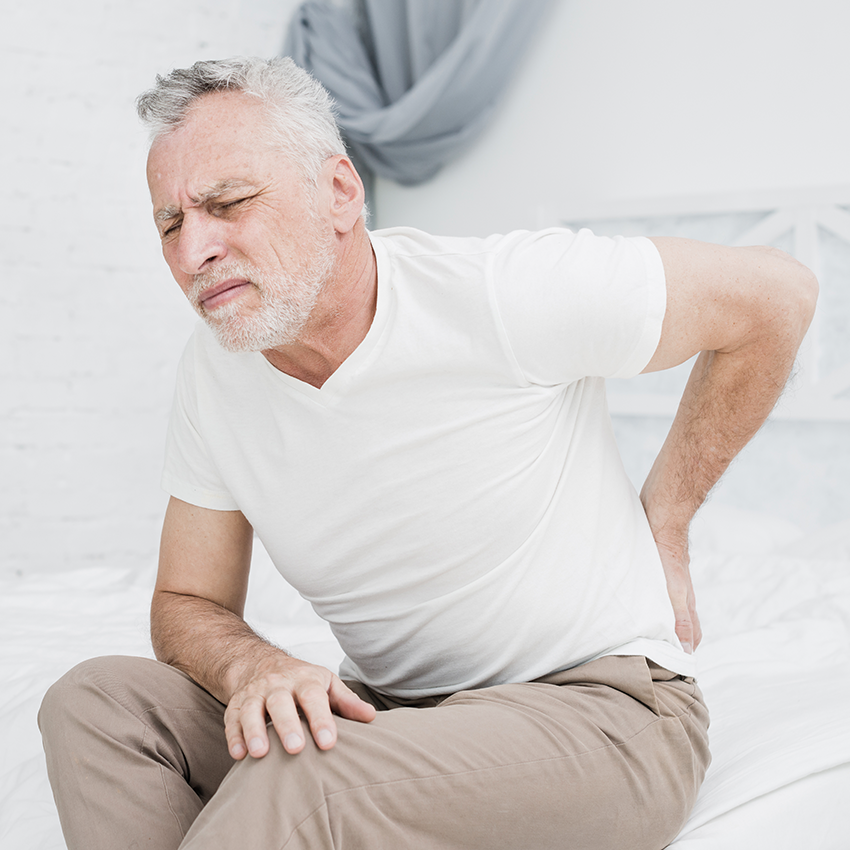Are you experiencing neck or lower back pain but you don’t know where it’s coming from? Maybe you’re less active lately, causing more discomfort and pain. If you’re wondering whether or not these symptoms are related to spinal stenosis, you’re in the right place.
What Is Spinal Stenosis?
This condition is known as a narrowing of the spaces within your spine. In other words, it affects the spinal cord and spinal column. When this narrowing happens, it allows for pressure on the nerves that travel through your spine.
What Causes Spinal Stenosis?
Symptoms of osteoarthritis are one of the most common causes of spinal stenosis. The wear and tear on your bones and joints can cause the narrowing of your spinal column which results in worsening symptoms over time.
Some other causes include the following:
Spinal Injuries
If you’ve ever been involved in a traumatic car accident, you may be at risk for this degenerative condition. Dislocations or fractures to vertebrae or displaced bone can damage the spinal canal. Likewise, recent back surgery can cause swelling that puts pressure on those nerves.
Bone Overgrowth
Another condition known as Paget’s disease is a bone disease that generally affects adults. It can cause bone overgrowth in the spine. Other wear and tear may also prompt the formation of bone spurs that grow into the spinal canal.
Herniated Disks
The disks in your vertebrae serve as cushions and shock absorbers in your spine. Age can cause these disks to dry out and crack which can allow the soft inner material to escape. This material then puts pressure on your spinal cord or other nerves.
Tumors
Although uncommon, tumors can form inside the spinal cord and in the space between the spinal cord and your vertebrae.
Thickened Ligaments
As you age, your ligaments may become stiff, thick, tough, or thick. Ligaments close to your spine may bulge into the spinal canal causing pressure.
Types of Spinal Stenosis
The types of this condition are classified according to where they affect you. It is possible to have more than one type. It is not common to have a diagnosis for your middle or upper back.
Cervical Stenosis
Cervical stenosis affects the cervical spine and may also be referred to as cervical spinal stenosis. Your cervical spine is in your neck and pain may radiate into your shoulders and upper back.
Lumbar Stenosis
The most common type of spinal stenosis occurs in the lower back. This is known as lumbar stenosis.
Symptoms
Some people never experience symptoms but may show evidence of the condition via MRI or CT scans.
For cervical stenosis, look out for numbness or tingling in your hands, arms, feet, or legs. Also be aware of weakness in these areas. Balance and walking may also be impeded.
Severe cases of cervical stenosis may prompt urinary urgency and incontinence or bowel problems.
Numbness, tingling, or weakness in the feet or legs and pain or cramping after standing for long periods may be indications of lumbar spine stenosis or lower back.
Complications
In rare cases and without treatment, severe spinal stenosis can progress and cause permanent damage such as numbness, weakness, and balance problems. Incontinence and paralysis are also attributable to the long term effects of this disease when left untreated.
Treatment
Depending on the severity of your case, your doctor may prescribe various treatments to help with the pain and other symptoms.
Medications
Regular pain relievers such as acetaminophen, ibuprofen, and naproxen may help with pain. These are generally reserved for short term use.
Some antidepressants and anti-seizure medications are also helpful for pain.
Physical Therapy
Especially if you have become less active due to your pain, your muscles are at a disadvantage for becoming weaker. This may cause even more pain.
A physical therapist can teach you specific exercises that can help you maintain flexibility and build strength and endurance.
Steroid Injections
Steroid injections can help reduce inflammation and relieve some pain. This may not work for everyone and your doctor will only prescribe a few injections per year.
Decompression
In order to alleviate the need for surgery, if at all possible, your doctor may perform a decompression procedure. This procedure uses needle-like instruments to remove thickened ligaments around the spinal cord. This method of treatment is only reserved for those with spinal stenosis related to thickened ligaments.
Surgery
As a last resort, your doctor may recommend spinal stenosis surgery. There are a few different options when it gets to this level so it’s important to have a lengthy conversation with your doctor about which option is best for your condition.
Home Remedies
Whether you have been officially diagnosed or you match some of the symptoms listed here, you need to get regular exercise. Yoga is a beneficial practice because it’s easy on your joints and teaches regular breathing which can help minimize pain.
You may also consider massage therapy, chiropractic treatment, and acupuncture as alternative remedies to medication and surgery.
Final Thoughts
Spinal stenosis generally affects women more prominently than men. While it can be a congenital disease, it is more likely to onset in people over age fifty. Younger people that experience spinal stenosis may have degenerative changes that require the attention of a physician.
Your doctor can give you a proper diagnosis by performing an MRI or CT scan. Spinal imaging can differentiate the causes of your pain which can also include trauma, spinal deformity, and genetic diseases that affect bone and muscle development.
If you have questions or require a consult, contact us at one of our convenient locations across New Jersey. We have been leaders in pain management for 15 years and look forward to helping you.

